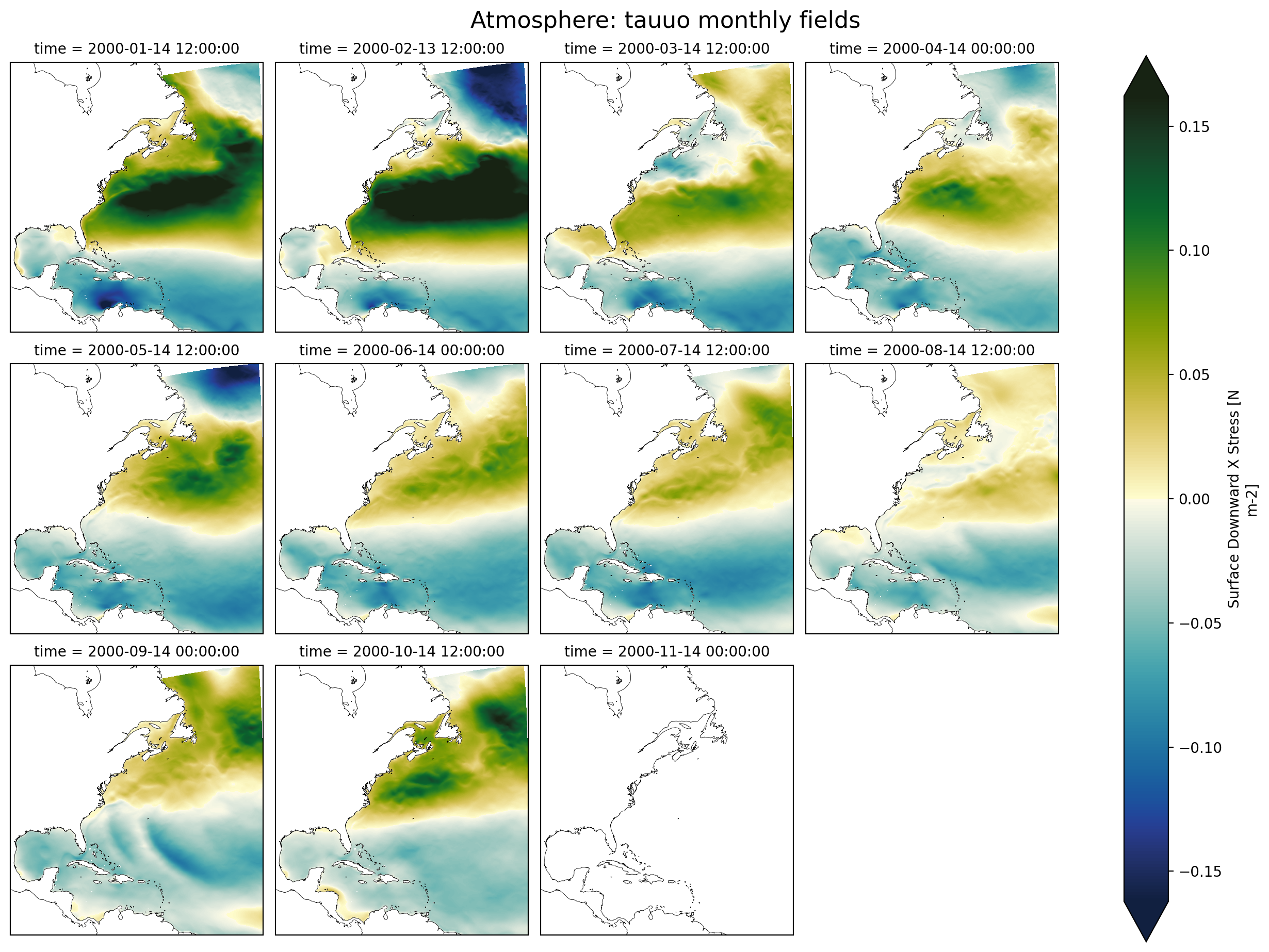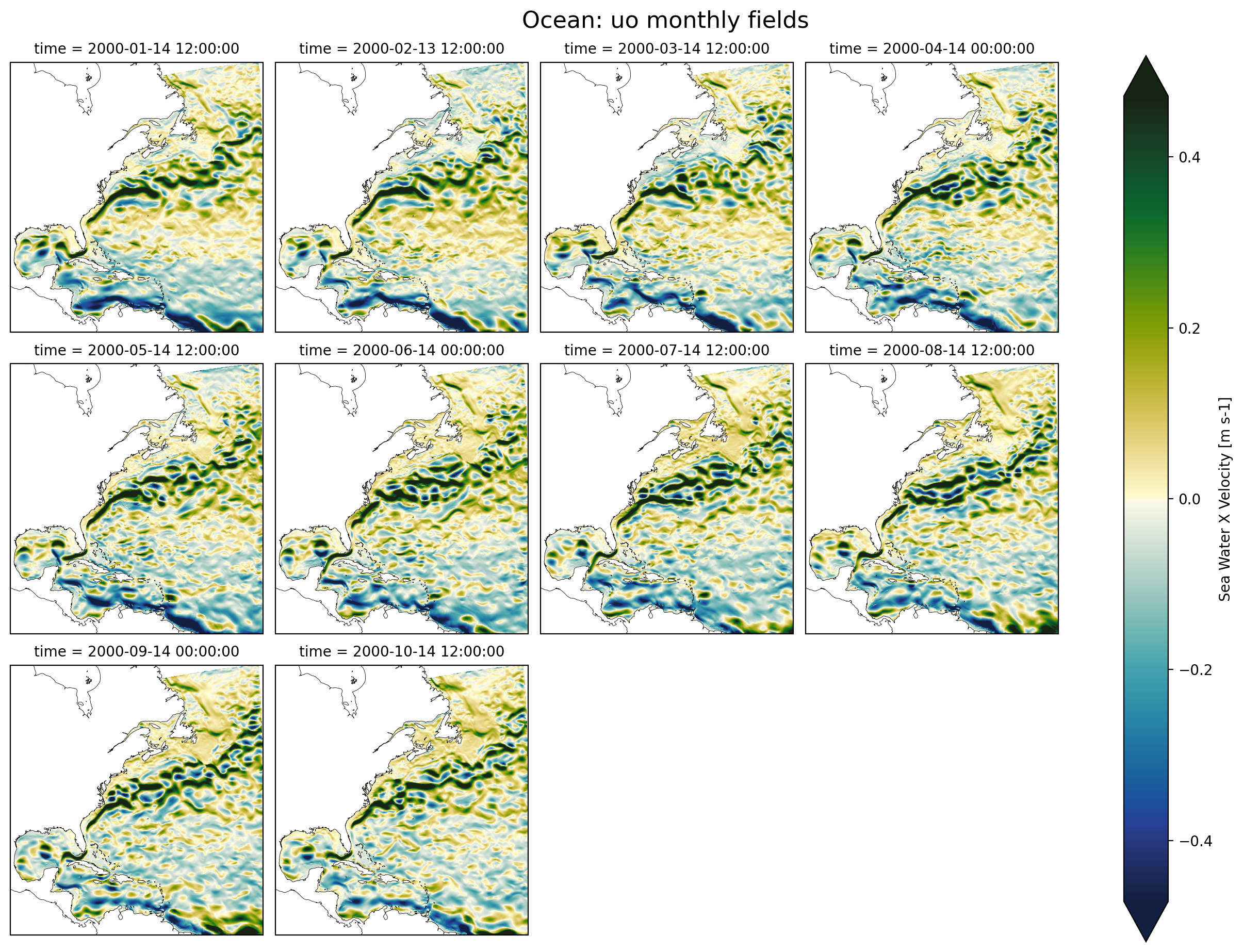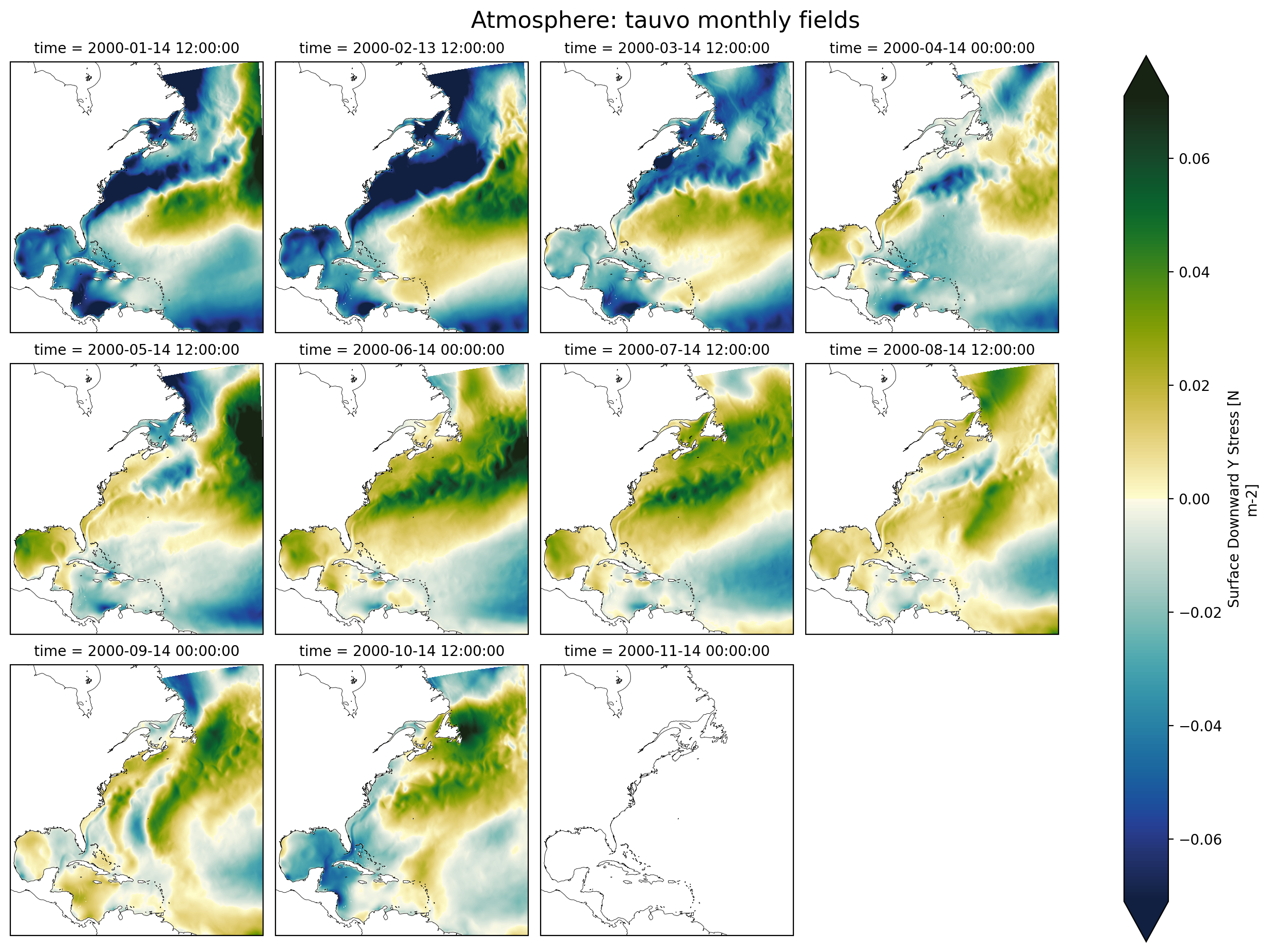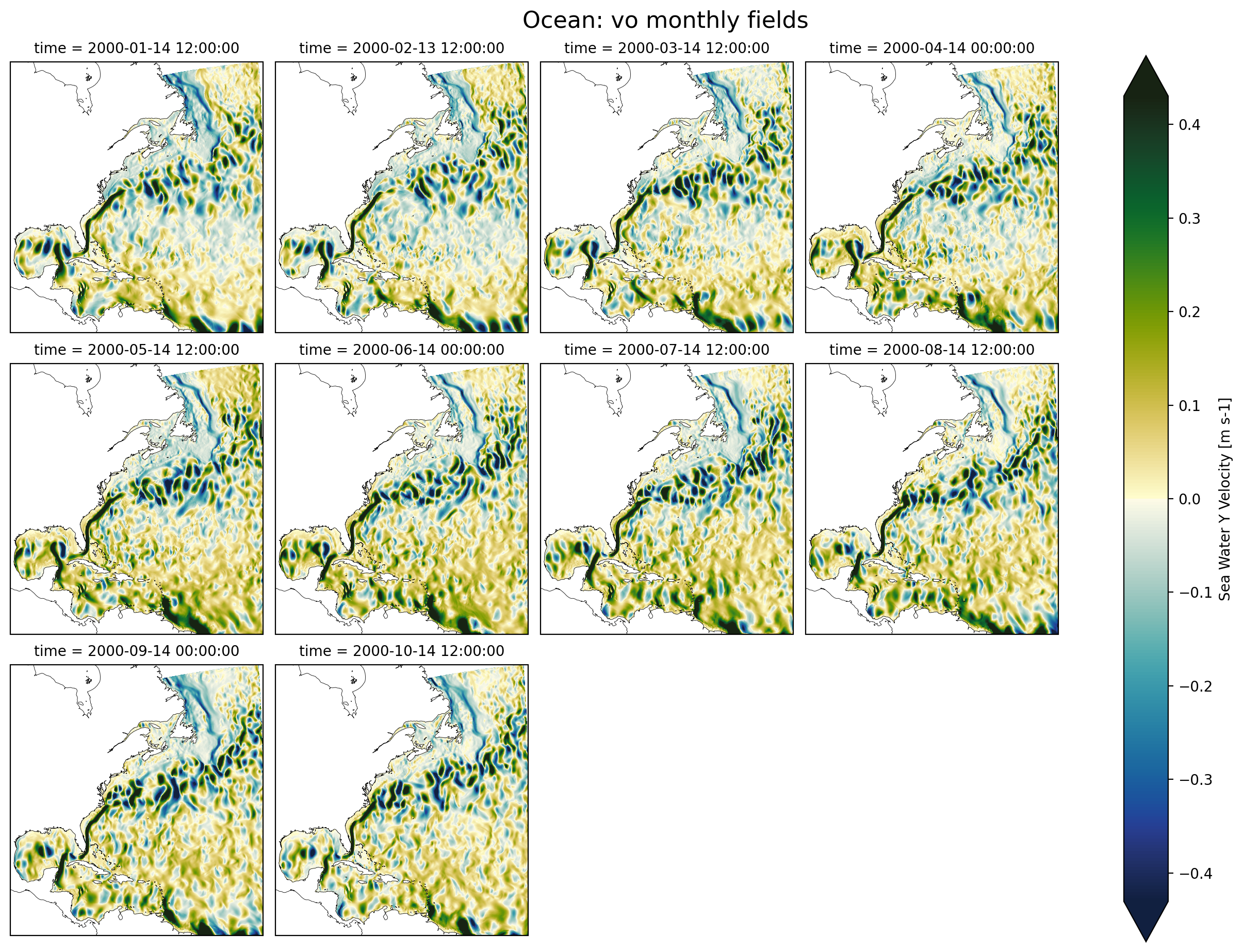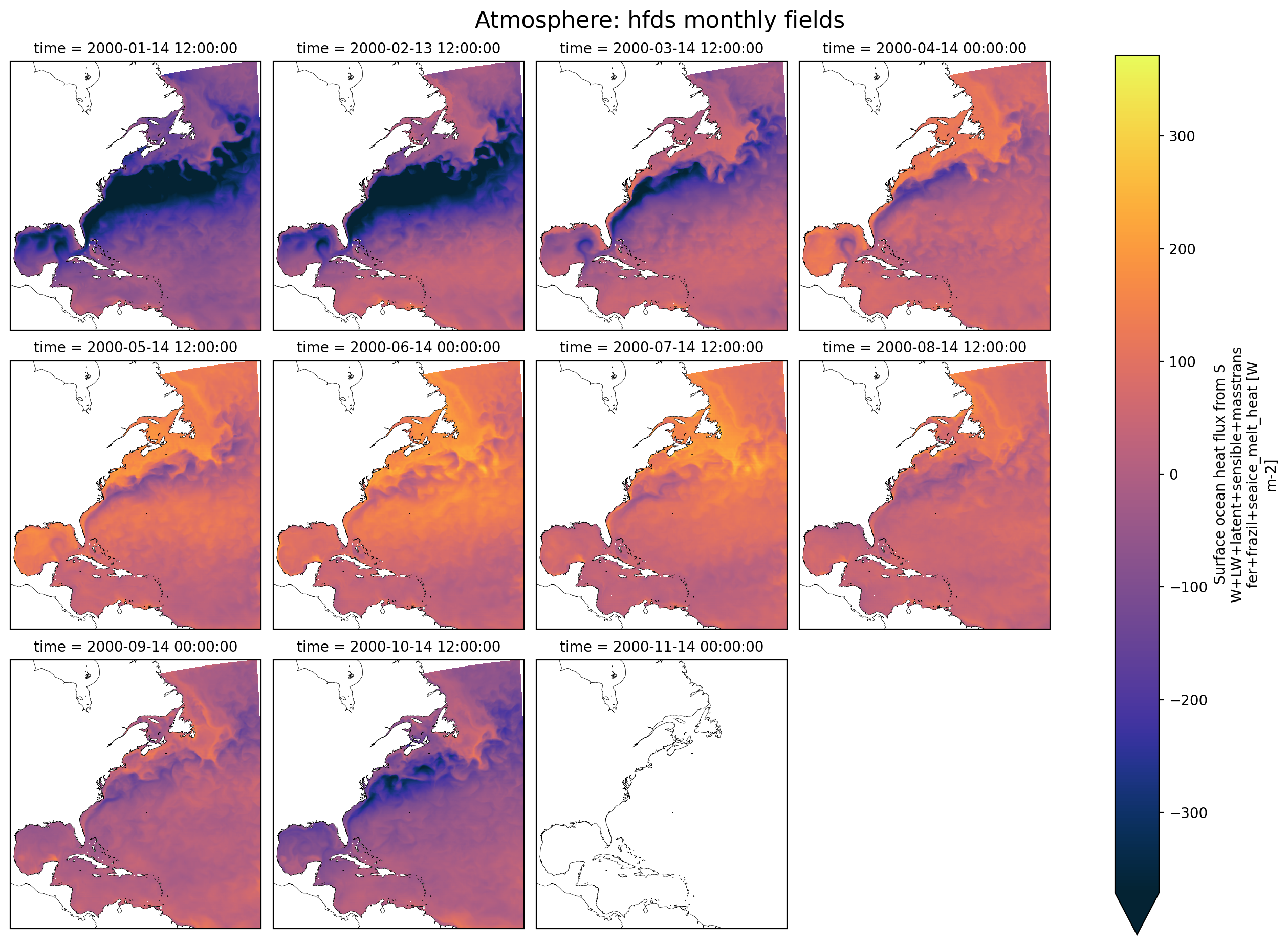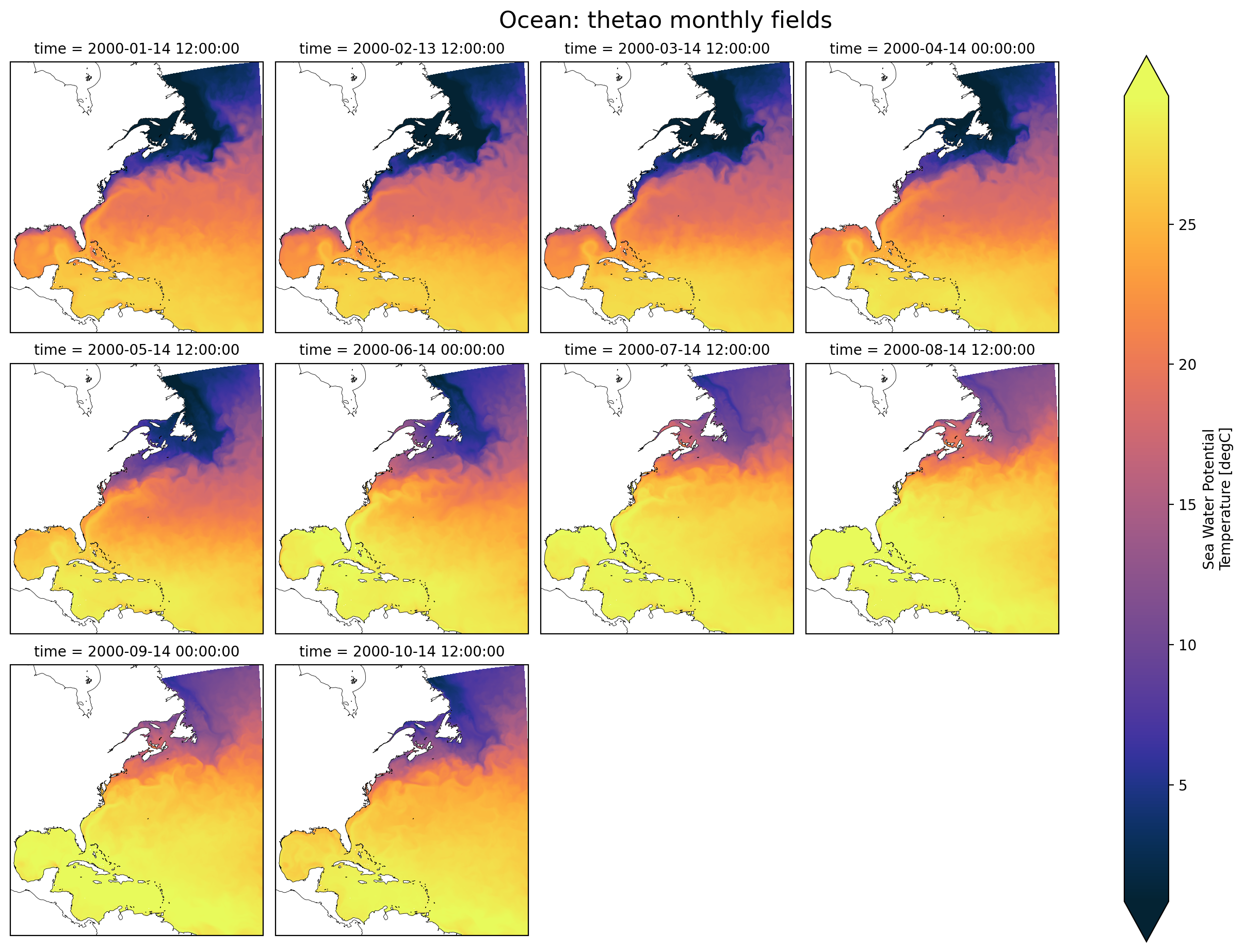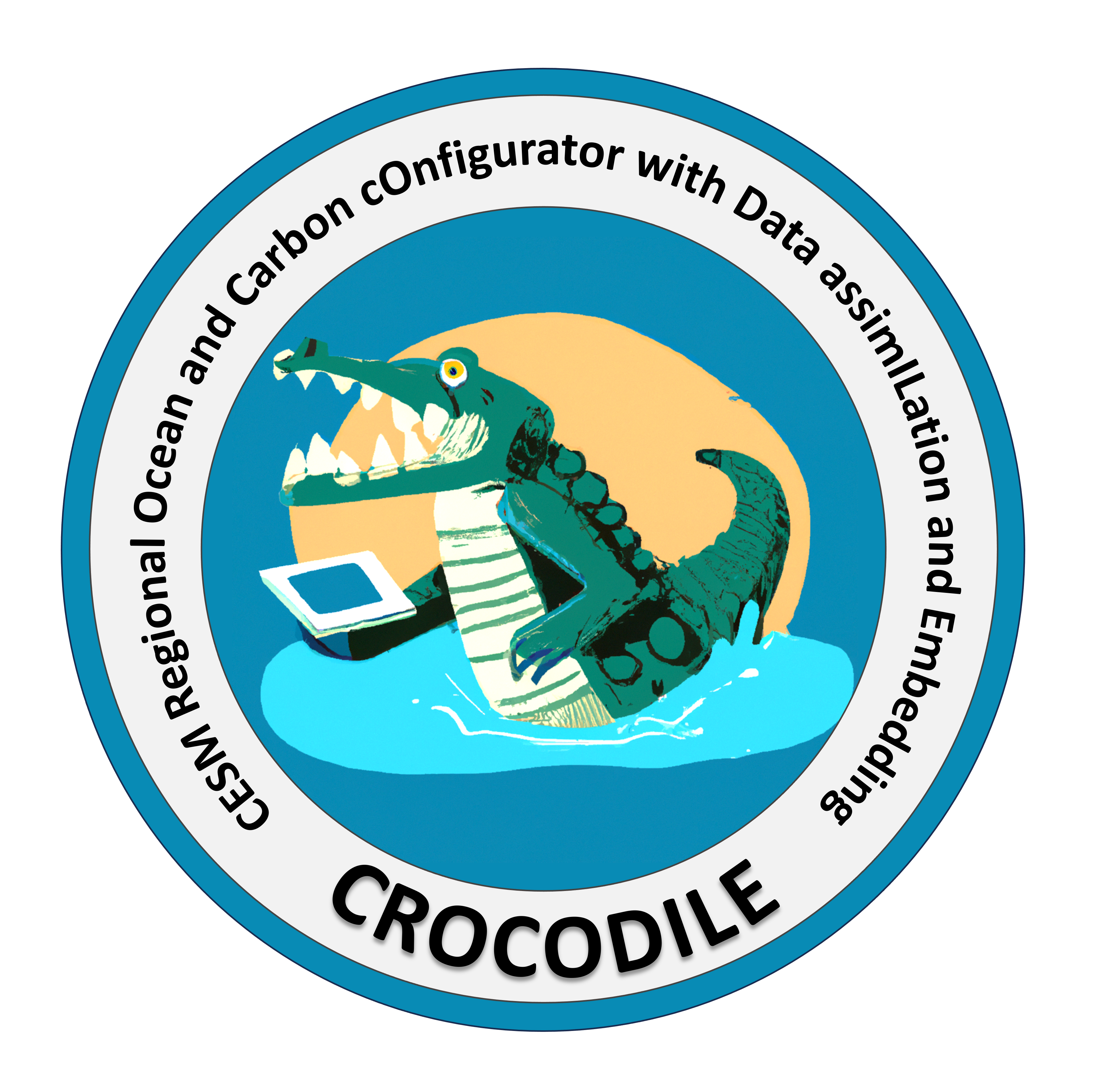Regional Ocean: Atmospheric Forcing#
# Parameters
case_name = "CROCODILE_tutorial_nwa12_MARBL"
CESM_output_dir = (
"/glade/campaign/cgd/oce/projects/CROCODILE/workshops/2025/Diagnostics/CESM_Output/"
)
start_date = ""
end_date = ""
save_figs = True
fig_output_dir = None
lc_kwargs = {"threads_per_worker": 1}
serial = True
atm_variables = ["tauuo", "tauvo", "hfds"]
ocn_variables = ["uo", "vo", "thetao"]
subset_kwargs = {}
product = "/glade/work/ajanney/crocodile_2025/CUPiD/examples/regional_ocean/computed_notebooks//ocn/Regional_Ocean_Atmospheric_Forcing.ipynb"
Output directory is: /glade/campaign/cgd/oce/projects/CROCODILE/workshops/2025/Diagnostics/CESM_Output//CROCODILE_tutorial_nwa12_MARBL/ocn/hist/
Image output directory is: /glade/derecho/scratch/ajanney/archive/CROCODILE_tutorial_nwa12_MARBL/ocn/cupid_images
## Select for only the variables we want to analyze
if len(atm_variables) > 0:
print("Selecting only the following surface variables:", atm_variables)
native_data = native_data[atm_variables]
if len(ocn_variables) > 0:
print("Selecting only the following monthly variables:", ocn_variables)
monthly_data = monthly_data[ocn_variables]
## Apply time boundaries
## if they are the right format
if len(start_date.split("-")) == 3 and len(end_date.split("-")) == 3:
import cftime
calendar = monthly_data.time.encoding.get("calendar", "standard")
calendar_map = {
"gregorian": cftime.DatetimeProlepticGregorian,
"noleap": cftime.DatetimeNoLeap,
}
CFTime = calendar_map.get(calendar, cftime.DatetimeGregorian)
y, m, d = [int(i) for i in start_date.split("-")]
start_date_time = CFTime(y, m, d)
y, m, d = [int(i) for i in end_date.split("-")]
end_date_time = CFTime(y, m, d)
print(
f"Applying time range from start_date: {start_date_time} and end_date: {end_date_time}."
)
monthly_data = monthly_data.sel(time=slice(start_date_time, end_date_time))
native_data = native_data.sel(time=slice(start_date_time, end_date_time))
native_time_bounds = [
native_data["time"].isel(time=0).compute().item(),
native_data["time"].isel(time=-1).compute().item(),
]
monthly_time_bounds = [
monthly_data["time"].isel(time=0).compute().item(),
monthly_data["time"].isel(time=-1).compute().item(),
]
print(f"Surface Data Time Bounds: {native_time_bounds[0]} to {native_time_bounds[-1]}")
print(
f"Monthly Data Time Bounds: {monthly_time_bounds[0]} to {monthly_time_bounds[-1]}"
)
Selecting only the following surface variables: ['tauuo', 'tauvo', 'hfds']
Selecting only the following monthly variables: ['uo', 'vo', 'thetao']
Surface Data Time Bounds: 2000-01-14 12:00:00 to 2000-11-14 00:00:00
Monthly Data Time Bounds: 2000-01-14 12:00:00 to 2000-10-14 12:00:00
Simple Visualization of Atmospheric Forcing vs Ocean Variables#
This notebook is short and sweet, designed to just show how we might access the atmospheric forcing variables. Pay particular attention to the meta data for the different variables!
Note: Native output can be weird, be wary and ask questions!
for coord in list(static_data.variables):
if "geolon" in coord or "geolat" in coord:
native_data = native_data.assign_coords({coord: static_data[coord]})
monthly_data = monthly_data.assign_coords({coord: static_data[coord]})
for i, var in enumerate(atm_variables):
field = native_data[var]
sfc_var = ocn_variables[i] # assuming order matches, it may not
sfc_field = monthly_data[sfc_var].isel(z_l=0)
geocoords = utils.chooseGeoCoords(field.dims)
lon = geocoords["longitude"]
lat = geocoords["latitude"]
cmap = utils.chooseColorMap(var)
transform = ccrs.PlateCarree()
subplot_kwargs = {
"projection": ccrs.Mercator(),
}
map_extent = [
float(field[lon].min()),
float(field[lon].max()),
float(field[lat].min()),
float(field[lat].max()),
]
# Plot atmospheric variable for each month
g1 = field.plot(
x=lon,
y=lat,
col="time",
col_wrap=4,
robust=True,
cmap=cmap,
transform=transform,
subplot_kws=subplot_kwargs,
)
plt.suptitle(f"Atmosphere: {var} monthly fields", fontsize=16, y=1.02)
for ax in g1.axs.flat:
ax.set_extent(map_extent, crs=ccrs.PlateCarree())
ax.coastlines(resolution="50m", color="black", linewidth=0.3)
if save_figs:
plt.savefig(os.path.join(image_output_dir, f"{var}_monthly_grid.png"))
plt.show()
# Plot ocean surface variable for each month
g2 = sfc_field.plot(
x=lon,
y=lat,
col="time",
col_wrap=4,
robust=True,
cmap=cmap,
transform=transform,
subplot_kws=subplot_kwargs,
)
plt.suptitle(f"Ocean: {sfc_var} monthly fields", fontsize=16, y=1.02)
for ax in g2.axs.flat:
ax.set_extent(map_extent, crs=ccrs.PlateCarree())
ax.coastlines(resolution="50m", color="black", linewidth=0.3)
if save_figs:
plt.savefig(os.path.join(image_output_dir, f"{sfc_var}_monthly_grid.png"))
plt.show()
